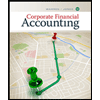Stacey's Piano Rebuilding Company has been operating for one year. At the start of the second year, its income statement accounts had zero balances and its balance sheet account balances were as follows: Cash $6,900 Accounts payable $9,100 Accounts receivable 30,400 Unearned revenue 3,140 Supplies 1,450 Long-term note payable 47,300 Equipment 9,700 Common stock 1,720 Land 7,500 Additional paid-in capital 6,880 Building 26,600 Retained earnings 14,410 Rebuilt and delivered five pianos in January to customers who paid $18,500 in cash. Received a $570 deposit from a customer who wanted her piano rebuilt. Rented a part of the building to a bicycle repair shop; received $880 for rent in January. Received $7,500 from customers as payment on their accounts. Received an electric and gas utility bill for $450 to be paid in February. Ordered $960 in supplies. Paid $1,440 on account in January. Received from the home of Stacey Eddy, the major shareholder, a $940 tool (equipment) to use in the business in exchange for 140 shares of $1 par value stock. Paid $14,400 in wages to employees who worked in January. Declared and paid a $1,700 dividend (reduce Retained Earnings and Cash). Received and paid cash for the supplies in (f). Paid $320 in interest expense on the long-term note payable. Required: 1 and 2. Enter the following transactions for January of the second year into the T-accounts, using the letter of each transaction as the reference: 3. Using the data from the T-accounts, amounts for the following at the end of January of the second year, were:
The Effect Of Prepaid Taxes On Assets And Liabilities
Many businesses estimate tax liability and make payments throughout the year (often quarterly). When a company overestimates its tax liability, this results in the business paying a prepaid tax. Prepaid taxes will be reversed within one year but can result in prepaid assets and liabilities.
Final Accounts
Financial accounting is one of the branches of accounting in which the transactions arising in the business over a particular period are recorded.
Ledger Posting
A ledger is an account that provides information on all the transactions that have taken place during a particular period. It is also known as General Ledger. For example, your bank account statement is a general ledger that gives information about the amount paid/debited or received/ credited from your bank account over some time.
Trial Balance and Final Accounts
In accounting we start with recording transaction with journal entries then we make separate ledger account for each type of transaction. It is very necessary to check and verify that the transaction transferred to ledgers from the journal are accurately recorded or not. Trial balance helps in this. Trial balance helps to check the accuracy of posting the ledger accounts. It helps the accountant to assist in preparing final accounts. It also helps the accountant to check whether all the debits and credits of items are recorded and posted accurately. Like in a balance sheet debit and credit side should be equal, similarly in trial balance debit balance and credit balance should tally.
Adjustment Entries
At the end of every accounting period Adjustment Entries are made in order to adjust the accounts precisely replicate the expenses and revenue of the current period. It is also known as end of period adjustment. It can also be referred as financial reporting that corrects the errors made previously in the accounting period. The basic characteristics of every adjustment entry is that it affects at least one real account and one nominal account.
Item 5
Stacey's Piano Rebuilding Company has been operating for one year. At the start of the second year, its income statement accounts had zero balances and its balance sheet account balances were as follows:
| Cash | $6,900 | Accounts payable | $9,100 |
| Accounts receivable | 30,400 | Unearned revenue | 3,140 |
| Supplies | 1,450 | Long-term note payable | 47,300 |
| Equipment | 9,700 | Common stock | 1,720 |
| Land | 7,500 | Additional paid-in capital | 6,880 |
| Building | 26,600 | Retained earnings | 14,410 |
- Rebuilt and delivered five pianos in January to customers who paid $18,500 in cash.
- Received a $570 deposit from a customer who wanted her piano rebuilt.
- Rented a part of the building to a bicycle repair shop; received $880 for rent in January.
- Received $7,500 from customers as payment on their accounts.
- Received an electric and gas utility bill for $450 to be paid in February.
- Ordered $960 in supplies.
- Paid $1,440 on account in January.
- Received from the home of Stacey Eddy, the major shareholder, a $940 tool (equipment) to use in the business in exchange for 140 shares of $1 par value stock.
- Paid $14,400 in wages to employees who worked in January.
- Declared and paid a $1,700 dividend (reduce Retained Earnings and Cash).
- Received and paid cash for the supplies in (f).
- Paid $320 in interest expense on the long-term note payable.
Required:
1 and 2. Enter the following transactions for January of the second year into the T-accounts, using the letter of each transaction as the reference:
3. Using the data from the T-accounts, amounts for the following at the end of January of the second year, were:
Complete this question by entering your answers in the tabs below.
- Req 1 and 2
- Req 3
Using the data from the T-accounts, amounts for the following at the end of January of the second year, were:
|
|
|
Trending now
This is a popular solution!
Step by step
Solved in 3 steps









